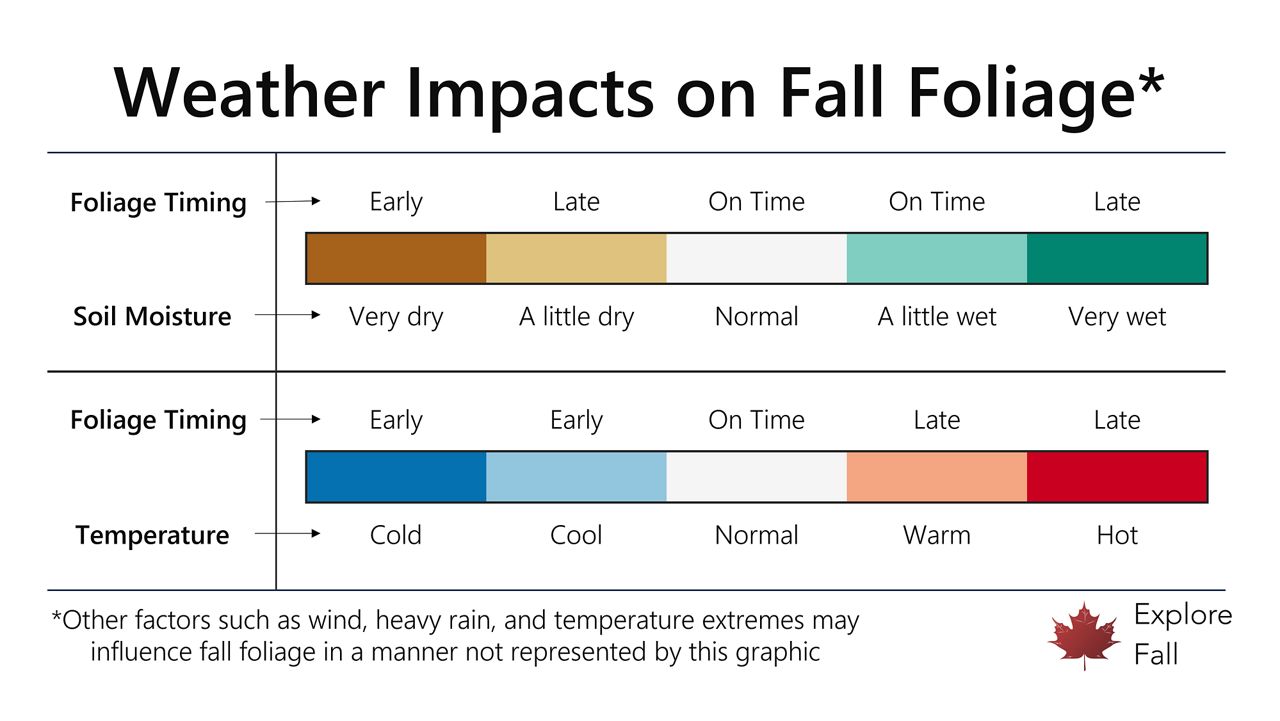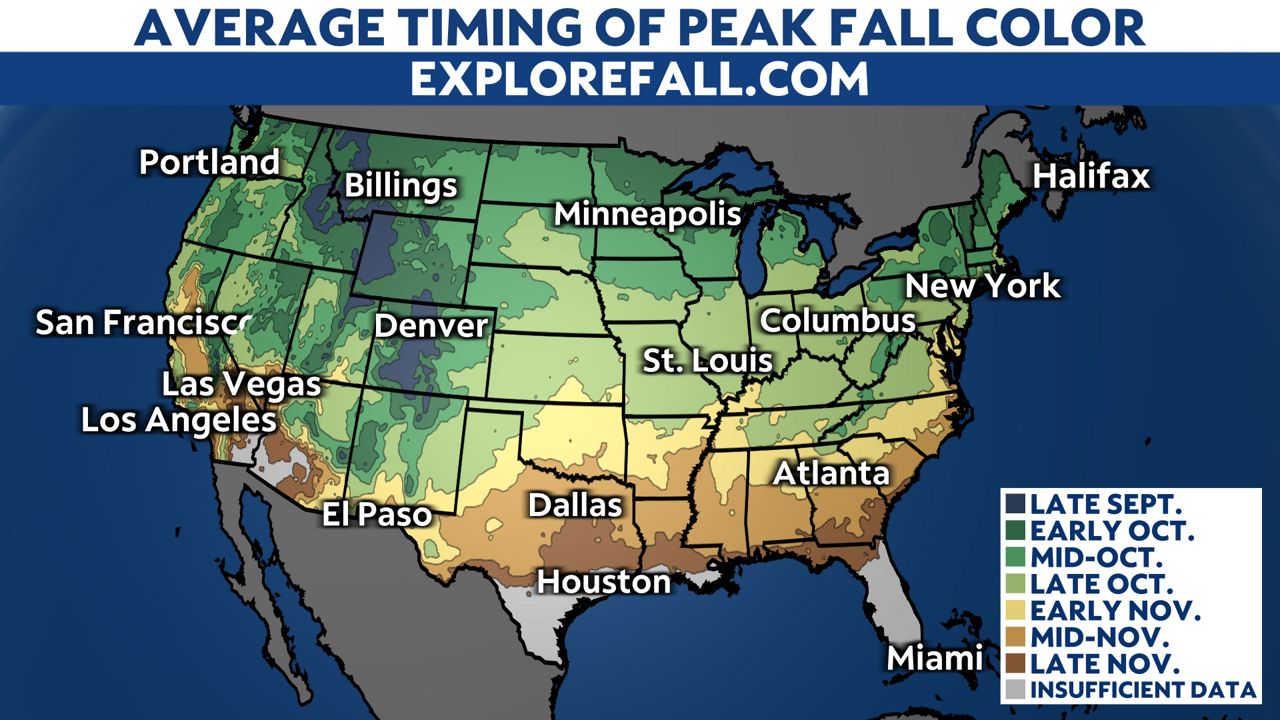Every fall, people travel far and wide to go ‘leaf-peeping.’ The goal is to catch the leaves at peak color to see all the vibrant reds, oranges and yellows that Mother Nature has to offer.
Weather plays a primary role in knowing when and where to go.
Right place at the right time
The first step of successful leaf-peeping is being at the right place at the right time. All other factors aside, this is the average time of the year around the U.S. that you can see peak fall colors according to Explore Fall.
Aside from the Florida peninsula, the Gulf Coast and parts of the desert Southwest, most of the continental U.S. sees color change during fall.
Weather’s role
The weather determines whether the fall foliage comes out early, on time or late every year, but what role does it play?
Heat and moisture are the biggest factors that influence fall foliage. The summer weather helps give an idea of when colors will pop, but the weather during September and October are the biggest influencers.
Here is how soil moisture and air temperature affect fall foliage.

(Courtesy: ExploreFall.com)
A prolonged late-spring or severe summer drought that leads to dry soils in the fall not only affects the timing, but the quality of the colors. Drought and drier soil puts a higher stress on the trees, dulling down the colors and forcing them to lose their leaves sooner.
Heavy rainfall and wet soils in the summer and fall can delay the colors’ arrival by a few days, or even weeks. The later arrival time can produce better fall colors.
Colder and below-normal temperatures bring out fall colors early, while prolonged summer heat and above normal temperatures delay the colors.
According to the USDA Forest Service, “a succession of warm, sunny days and cool, crisp but not freezing nights seems to bring about the most spectacular color displays.” In other words… typical fall weather.
2023 outlook
In some parts of the country, leaves have already started turning. The first areas to see color are further north and at higher elevations, including parts of the Upper Midwest and Northern Plains, the Mountain West and interior Northeast.
For a lot of these spots, it’s right on time. When can the rest of the country expect to see color? Tree stress gives us a good idea if foliage will come out early, on time or late.
It takes those earlier factors into account – soil moisture and temperatures. Low stress areas are where the foliage is most likely to be on time.
)
The most stressed trees are across parts of the Midwest, northern Virginia and the Pacific Northwest. All of those areas are experiencing drought conditions, which could cause the trees to lose leaves early and mute the colors.
Other areas under moderate stress, like California, the interior Northeast and the Southeast have had healthy rainfall totals throughout a wet spring and summer, which would delay foliage.
You can check on Explore Fall for a current fall foliage map and forecast updated daily.
Our team of meteorologists dive deep into the science of weather and break down timely weather data and information. To view more weather and climate stories, check out our weather blogs section.

